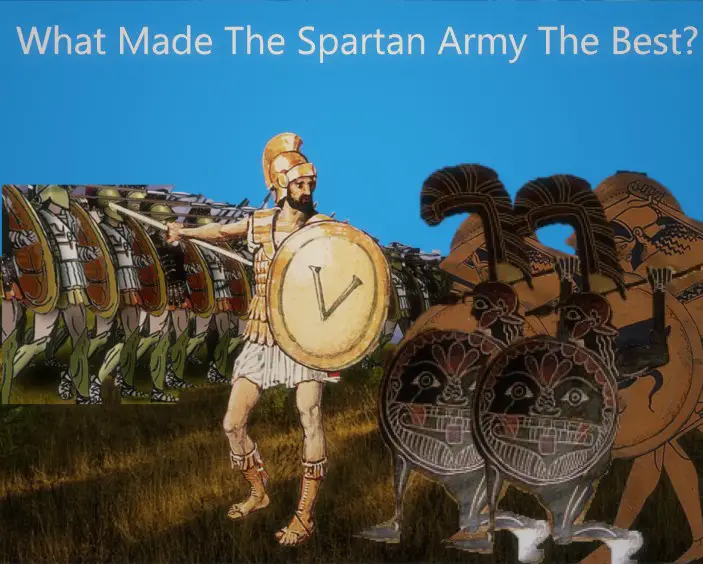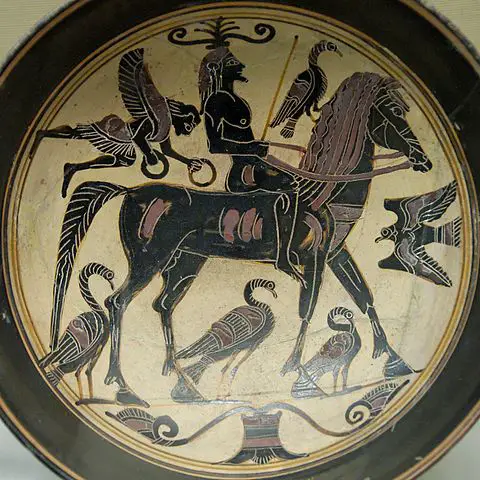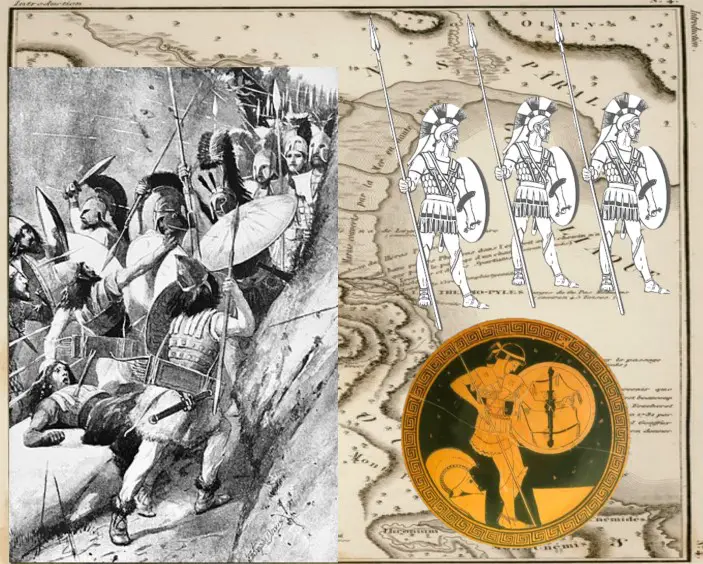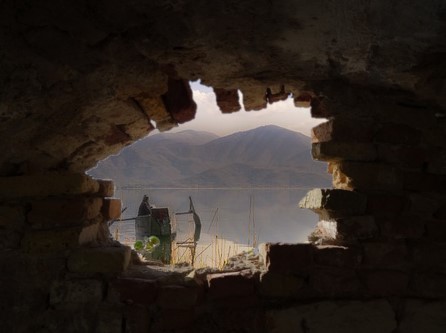
| Further Reading | 3 Reasons Sparta Won The Peloponnesian War Against Athens |
Few ancient armies have the legendary status today as the Spartans. To this day when people think of ancient Greek armies they often think of Sparta. While Sparta itself was just a city-state there are 3 things that contributed to making the army of Sparta the best in classical Greece.
Contrary to popular belief the Spartan army did not have any better equipment, tactics, or armor. Instead what made the Spartan army better than the armies of other classical Greek city-states were 3 things.
- The Spartan constitution allowed for near-constant military discipline and training.
- After the Battle of Thermopylae, a myth started to form of unstoppable Spartan warriors; this greatly impacted other city-state morale when fighting Sparta.
- The Spartan society was set up to allow Spartan citizens to grow taller than other Greek warriors
Each of these 3 things acted in combination to provide an almost unstoppable Spartan army from 750 BC up until the Battle of Leuctra in 371 BC when Spartan military dominance over Greece was finally fractured. For a brief period of nearly 400 years, Sparta was known around the Greek world for having the best army. At its peak, Sparta controlled nearly all Greek city-states and would become the defacto ‘protector’ of ancient Greece.
Here at The History Ace, I strive to publish the best history articles on the internet. If at the end of this article you enjoyed it then consider subscribing to the free newsletter and sharing it around the web.
Without further ado, here are the 3 things that made the Spartan army the best in classical Greece.
1.) The Spartan Constitution Allowed For Near-Constant Military Discipline and Training

In all other city-states of classical Greece, the army was comprised of citizens who had other occupations. This meant that a hoplite phalanx from Athens was comprised of painters, shipmakers, farmers, and all other sorts of non-military people.
Sparta on the other hand built its constitution to allow for a near permanently standing military. The male citizenry basis was in charge of supervising their helot workforce while also training as soldiers. This made the average Spartan citizen exceptionally well suited for both being a slave master as well as a soldier.
From a young age, Spartan boys were taught to train physically and mentally to prepare them for military service. At the age of 20 Spartan men were brought into their military unit and trained nonstop on military maneuvers and drills.
The reason that this matter is because of the nature of warfare during classical Greece. All Greek city-states would field hoplites equipped with bronze armor, shields, and spears in a phalanx formation. When the two phalanx’s of Greeks fought each other it would turn into a giant pushing match with both sides trying to outmuscle the other.
The pivotal part of this phalanx was the front line. Here if you had inexperienced or untrained warriors they would quickly succumb to the psychological and physical pressure of phalanx combat and retreat.
This was where the Spartan army shined. Since they were trained from an early age to handle military combat the Spartan phalanx was known to be able to outmuscle and outlast other Greek soldiers. This was the key to making the best army in Greece during the classical period. Once the front line of the phalanx was broken then the rest of a Greek army could be routed.
This was only possible because of the constitution of Sparta. From the ground up Sparta was built for extreme efficiency and everything went to supporting and developing a hardened army.
2.) After the Battle of Thermopylae, a Myth Started to Form of Unstoppable Spartan Warriors; This Greatly Impacted Other City-State Morale When Fighting Sparta

Let’s get one thing straight; Sparta’s army was not invincible. At the end of the day, they were just better-trained hoplite soldiers when compared to their other Greek counterparts.
Up until the Battle of Thermopylae in 480 BC, Sparta was quickly becoming known around the Greek world for its fighting ability. However, at this point, there was no myth of the invincible Spartan army. In fact, it was not until the Spartan army was defeated in 669 BC that they even adopted the phalanx way of fighting that they are known for today.
In 480 BC Sparta would send 300 Spartans under the command of King Leonidas to stop the Persian army’s advance at the gates of Thermopylae. This battle lasted about 3 days and resulted in the Spartan and Greek army fighting the Persians to a standstill. After 3 days the Spartan army was defeated and the Persians would march on to sack Athens.
While the Battle of Thermopylae was technically a defeat it created a legend of an invincible Spartan army. This was because for 2 of the 3 days Greek warriors from the other city-states fought alongside the Spartan warriors and saw their method of combat. When King Leonidas I dismissed these Greek soldiers to go home and raise another army this reputation would spread.
Around this time (484-425 BC) the famous historian Herodotus was writing his highly influential Histories which explained the Greek world. Within this work Herodotus praised the Spartan way of life and the quality of their soldiers. His account of the Battle of Thermopylae is one of the main reasons that the myth of the unstoppable Spartan army formed. Herodotus would travel across Greece reciting his Histories to large groups of people.
From 450 BC up until 370 BC the Spartan army would use this myth of their bravery and professionalism in combat to instill fear in other city-states. From 431-371 BC Sparta would fight other greeks for dominance and this myth tremendously helped to encourage Spartan bravery in combat while also helping to scare other Greek city-states to surrender.
It was not until 371 BC that the Spartan hegemony and myth were shattered after the disastrous defeat of Sparta by Thebes at the Battle of Leuctra.
3.) The Spartan Society Was Set Up to Allow Spartan Citizens to Grow Taller Than Other Greek Warriors

This sounds crazy to a lot of people, one of the main reasons why the Spartan army was so good was because of their excess height and strength.
From both historians and archaeologists, we know that the average height of a Spartan warrior was almost a whole head above other Greeks. We know of this because of how the Spartan phalanx was taught to fight. Each shield had to cover the Spartan and the other warrior to the left of him.
Spartan shields were larger than other shields in ancient Greece. There is no way that a Spartan warrior would carry more equipment into the field than was necessary and this applies to the shield size as well. Spartans were simply larger and stronger than the other warriors in armies around Greece.
Historians have long debated why this was the case. One of the main theories is that Spartan society encouraged the growth of tall citizens by providing them with ample food and exercise. This over centuries allowed Sparta to grow almost 5 inches taller on average than other Greek warriors.
On top of this height increase came a strength increase as well. Spartan boys from an early age were instructed to walk, hike, run, swim, and wrestle nearly nonstop to build up strong muscles for their later service in the military.
Other Greek city-states did not do this with their youth. Instead, children were raised by parents who taught them their trade. In Sparta, all boys were given an education that prepared them for service in the military.
What we get out of this was an army of taller and stronger warriors. This excess height and strength was used to terrify and intimidate other Greek warriors. This was the third thing that made the Spartan army the best in Greece according to ancient sources.
Conclusion
There you have it; an entire article on why the Spartan army was the best in Greece.
Was the Spartan army the best? Chances are we will never know. Much of what we know about them comes from old sources that were written centuries after the fall of Spartan dominance in the Aegean. We do know that the Spartan warrior was taller and better trained but this does not necessarily make a better army.
I hope you liked this article. Here at The History Ace, I strive to publish the best history articles on the internet. If you enjoyed this content then consider subscribing to the free newsletter and sharing around the web.
Further, you can check out some of the other articles below.
-
The 3 Things That Made the Spartan Army the Best in Greece

What made the Spartan army so good? Well here are the 3 reasons that the ancient sources tended to agree on the greatness of Sparta.


